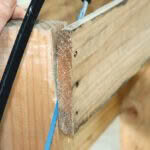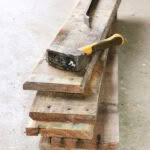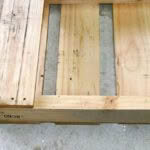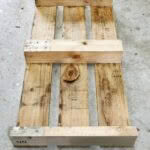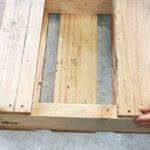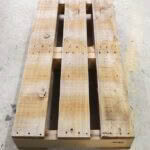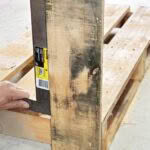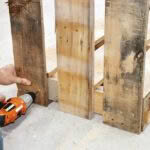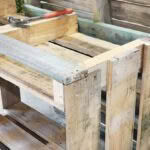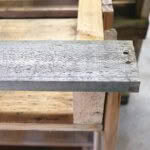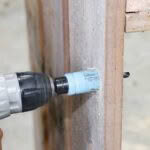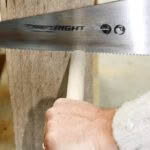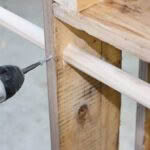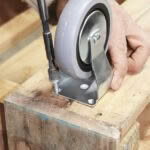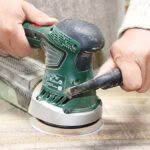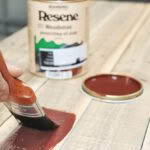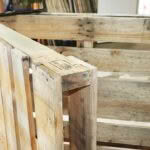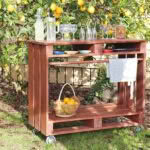DIY Project: Upcycle old pallets into a mobile outdoor table
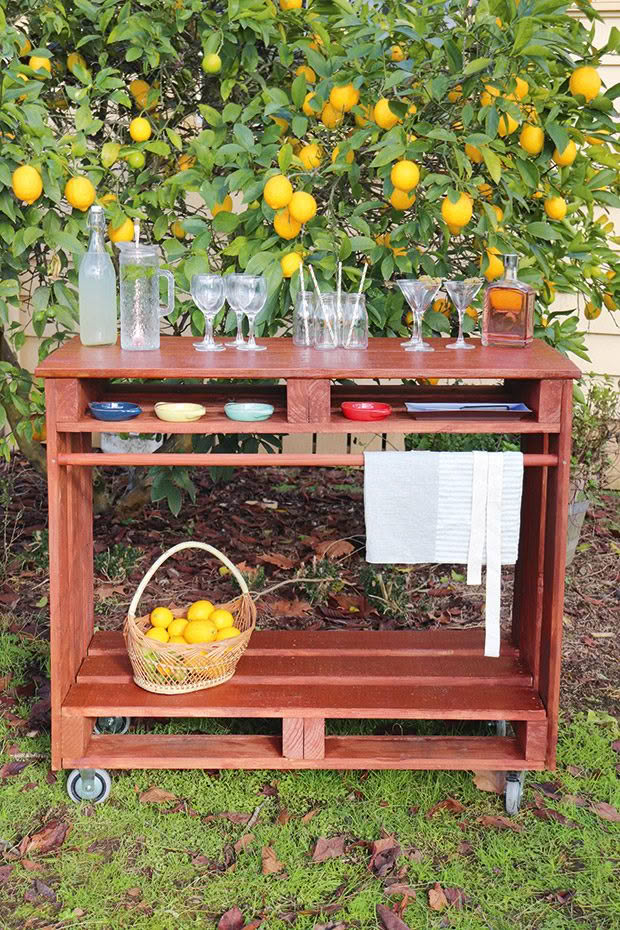
Turn three old pallets into a useful mobile table for entertaining.
Words & images: Julie & Jel Legg
MATERIALS
2 x 6-slatted wooden pallets of equal size
1 larger pallet (with longer wooden slats)
50mm screws
1m length of pine dowelling
4 x castor wheels (2 fixed, 2 swivels)
25mm hex screws for castors
Resene Waterborne Woodsman tinted to Resene Cedar
TIPS FOR PULLING A PALLET APART
Pulling a pallet apart can be difficult. To avoid splitting the wood slats as you remove them, make a small gap between the frame and the wooden slats:
• use a hammer and a screwdriver to prise a 2mm gap;
• use a hacksaw through the gap to saw through the old nails (pictured in Step 1);
• use a crowbar to carefully prise the timber slats off in one piece.
INSTRUCTIONS
Step 1: Use a hammer, hacksaw, and crowbar to dismantle three wooden slats from the 6-slatted pallets (see tip above). These six slats will become the vertical sides of the pallet bar in Step 5, so they mustn’t be damaged during removal.
Step 2: Trim the two partially deconstructed pallets by removing superfluous structural wood with a handsaw, to create two ‘half’ pallets.
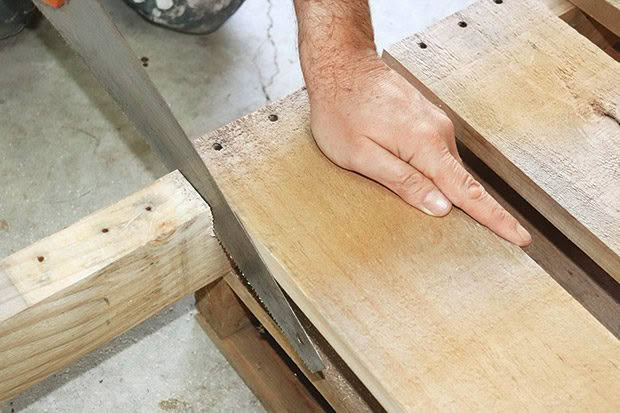
Step 3: Flip the ‘half’ pallets over so the top three slats are facing the floor and remove the exposed single slatted board (keep for Step 4). This flat structure will form the upper shelf.
- Flip the ‘half’ pallets over so the top three slats are facing the floor.
- This flat structure will form the upper shelf.
Step 4: Screw the slat you removed in Step 3 wood to the underside of the other half pallet. Be careful to avoid the existing nail holes as they will contain sheared nails. This half-pallet, now with feet, becomes the base. Set the base the right way up on a flat surface (as pictured below).
Step 5: Cut the six wooden slats from Step 1 to 870mm (or shorter, depending on the overall height you wish the structure to be). Stand three slats upright at one end of the half-pallet from Step 4, flush to the base and evenly spaced. Use screws to attach. Repeat with the remaining three slats at the other end.
Step 6: Turn over the half-pallet (created in Step 3), so the wood slats face down – this will form the top shelf of the table. Align so the wood at the top is flush with the top of the upright slats. Secure with screws through the upright slats and into the shelf.
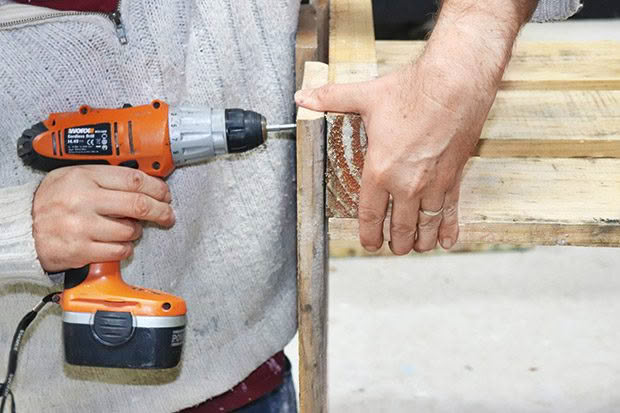
Step 7: Dismantle the wooden slats from the large pallet. These become the top of the table and enclose the upper shelf. You want the slats to be long enough so there is a small overhang on the sides, front, and back of the top. Cut to the desired length.
Step 8: Line up the loose wooden slats, so they fit snugly together. Clamp in place. Screw the slats to the shelf beneath to secure.
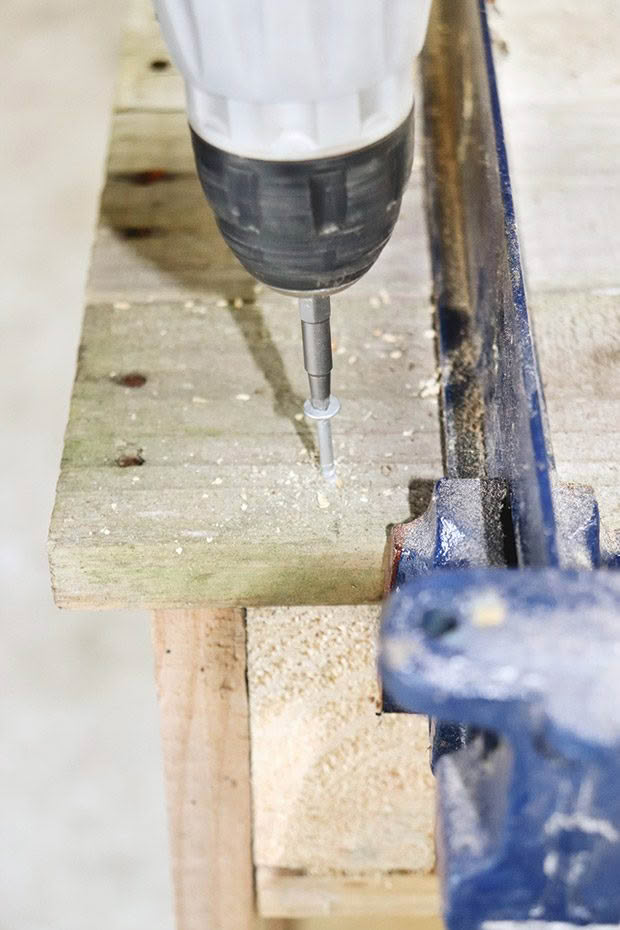
Step 9: Drill a hole into each front side slat, big enough to push through a length of dowelling. We put ours 10cm below the shelf as a tea towel rail. One end of the dowelling should sit flush on one side. The other end should protrude (which makes it easy to hold while you secure it). Screw through the front of each side face into the dowelling to secure. Trim excess dowelling with a saw.
Step 10: Flip the whole structure upside down. Attach a castor to each corner.
Step 11: Flip the structure upright. Sand the top and sides to a smooth finish. Stain all wood surfaces. We used Resene Waterborne Woodsman penetrating oil stain, tinted to Resene Cedar. For a lower maintenance option, you can paint your pallet table instead, using Resene Lumbersider low sheen or Resene Lustacryl semi-gloss. If you opt for for a dark colour, choose the Resene CoolColour version to keep the surface cooler.
BEFORE AND AFTER
Love this story? Subscribe now!
 This article first appeared in NZ Lifestyle Block Magazine.
This article first appeared in NZ Lifestyle Block Magazine.
